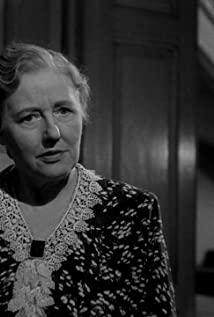This classic 1944 film tells the story of a young and vulnerable female singer Paula (Ingrid Bergman). Paula is married to Gregory (Charles Boyer), a charming and somewhat mysterious older man. But what she didn't know was that her dear husband had been trying to drive her mad in order to embezzle her inheritance. He kept saying that she was sick and weak, and often changed the furnishings in the room and put her on her head. The most insidious thing is that he deliberately manipulated the gas to make her watch the gas lamp dim inexplicably. Paula begins to believe that she has lost her mind under the execution of her husband's evil plan. Confused and frightened, she becomes hysterical and ends up being the vulnerable, disoriented person Gregory calls it. She was caught in a vicious circle: the more she doubted herself, the more confused and hysterical she became. She desperately longed for her husband's approval, and when he heard him say he loved her, he not only refused, but repeatedly said that she was already insane. It wasn't until later that a detective assured her that he, too, had seen the gas lights dim, that she gradually regained her sanity and confidence. From Under the Gaslight we can clearly see that a gaslight-operated relationship always involves two people. Gregory needs to feel powerful and in control by constantly seducing Paula into being fooled, and Paula also longs to be seduced. She over-idealized this strong and handsome man, desperately trying to believe that he would cherish and protect her. She didn't want to blame him or re-examine him when he started the mental abuse, but stuck to the romantic image of the perfect husband in her head. Her unease about herself and her idealized vision of her husband provide the perfect entry point for his manipulative behavior. In the movie Under the Gaslight, the gaslight operator seeks things he can see and touch. He deliberately drives his wife crazy so that he can take her property. There are few such nefarious gaslighters in real life, but the effects of their actions can be nefarious as well. From the gaslighter's point of view, though, he's just protecting himself. The gaslighter's self-perception was so flawed that he could not tolerate the slightest questioning of his views. No matter how he understands the world, you have to take the same view—or you're deliberately throwing him into unbearable anxiety. Say you're smiling at a guy at a party and it makes your partner uncomfortable. A non-gaslighter might say "yes, I'm the jealous type", or "Honey, I know you've done nothing wrong, but seeing you having so much fun with other guys still makes me nauseous. mad". He is willing to admit that his discomfort may stem from the specific situation or his own insecurities. Even if you're actually flirting -- even if you're flirting too far -- the non-gaslighter is willing to admit that you didn't mean to make him feel bad, even though he might express distaste for your behavior, or even make you immediately stop this behavior.
View more about Gaslight reviews










